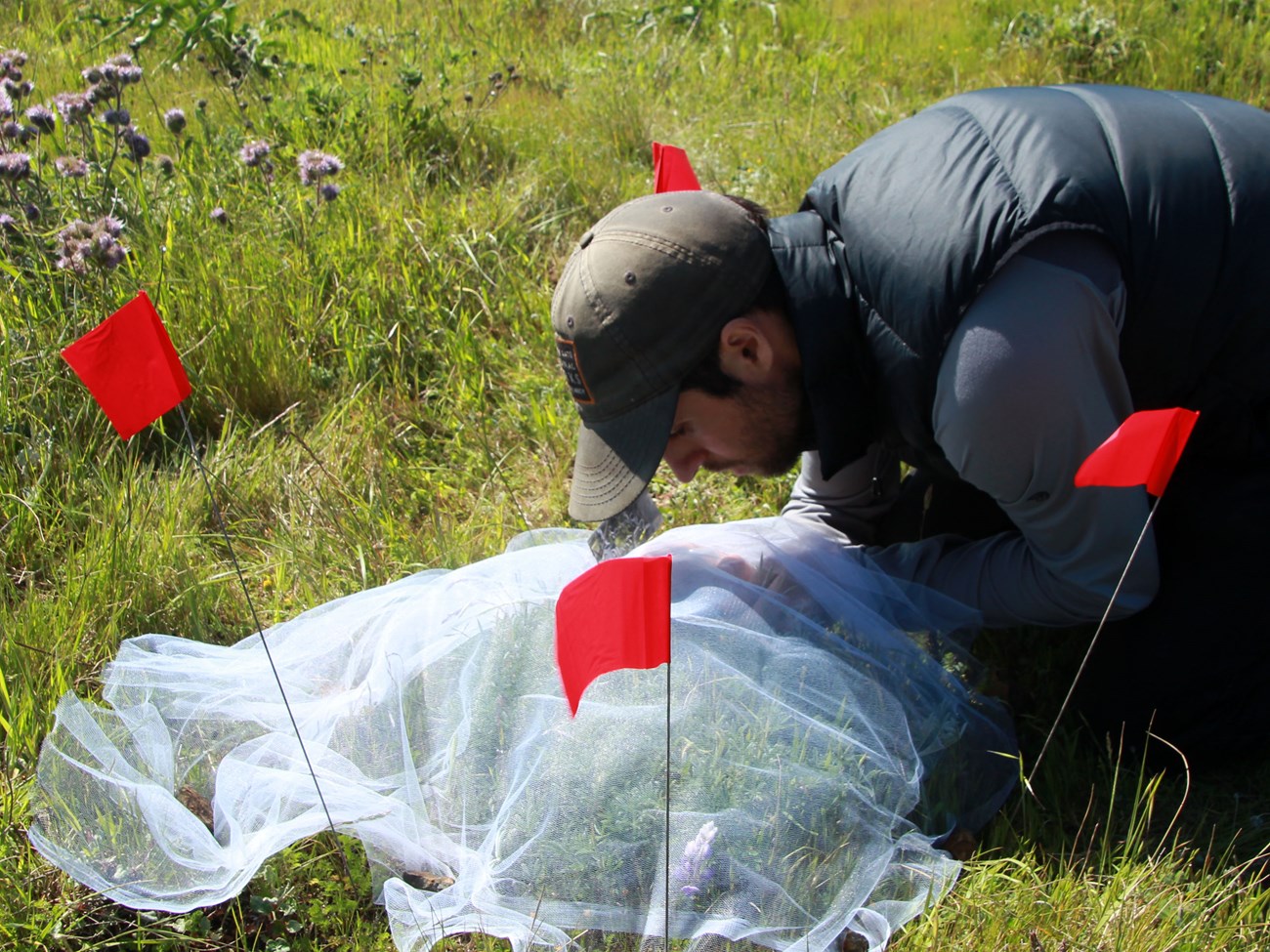Last updated: April 30, 2019
Article
Mission Blue Translocation Project Enters Year Three

Sean Correa / Parks Conservancy
April 2018 - Park partners and staff were alarmed when only three federally endangered Mission blue butterflies were recorded in 2015 at Golden Gate National Recreation Area’s Milagra Ridge. So they took action, doubling down on habitat restoration work in the area, and starting the Mission Blue Butterfly Translocation Project in 2017. In the project’s first season, teams translocated 30 Mission blues from San Bruno Mountain to Milagra Ridge. Another 45 butterflies were translocated last year.
The project’s third season got off to a strong start on April 10, thanks to the efforts of interns and staff from the Golden Gate National Parks Conservancy and the National Park Service, as well as support from San Mateo County. The team collected six female and three male Mission blues from San Bruno Mountain, the maximum they can translocate in one day. Translocations will continue until early June, or until the team reaches this year’s goal of translocating 20 females and 10 males. The project has one more year of funding. Monitoring is ongoing to gauge the project’s success, and and will continue to inform management efforts in the years ahead.

Sean Correa / Parks Conservancy
In related news, the translocation project has led to an important discovery about Mission blue biology. Existing literature on Mission blues states that their eggs hatch in around 7-10 days. But in 2017, staff at Milagra Ridge noticed that the eggs they were monitoring were taking longer than that. In 2018 they planned for this, and monitored individual eggs over time. To their surprise, they found that the eggs hatched an average of about 14 days after they were deposited. In some cases, hatching took almost a month. This new data may help improve the accuracy of Mission blue population models going forward.
Email Sean Correa or Christina Crooker to learn more, or to assist with field work on this project.
